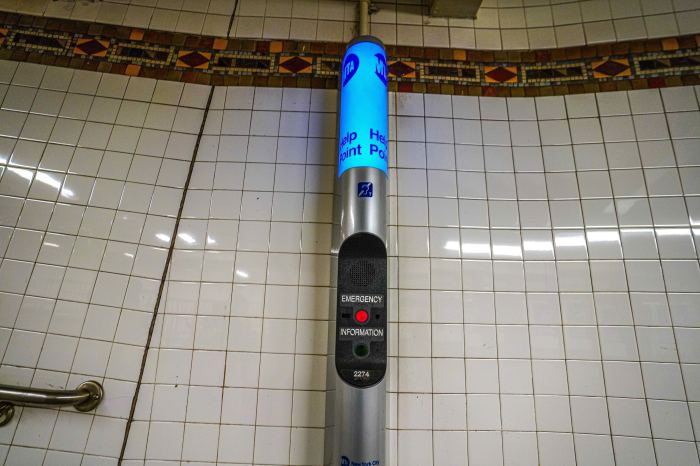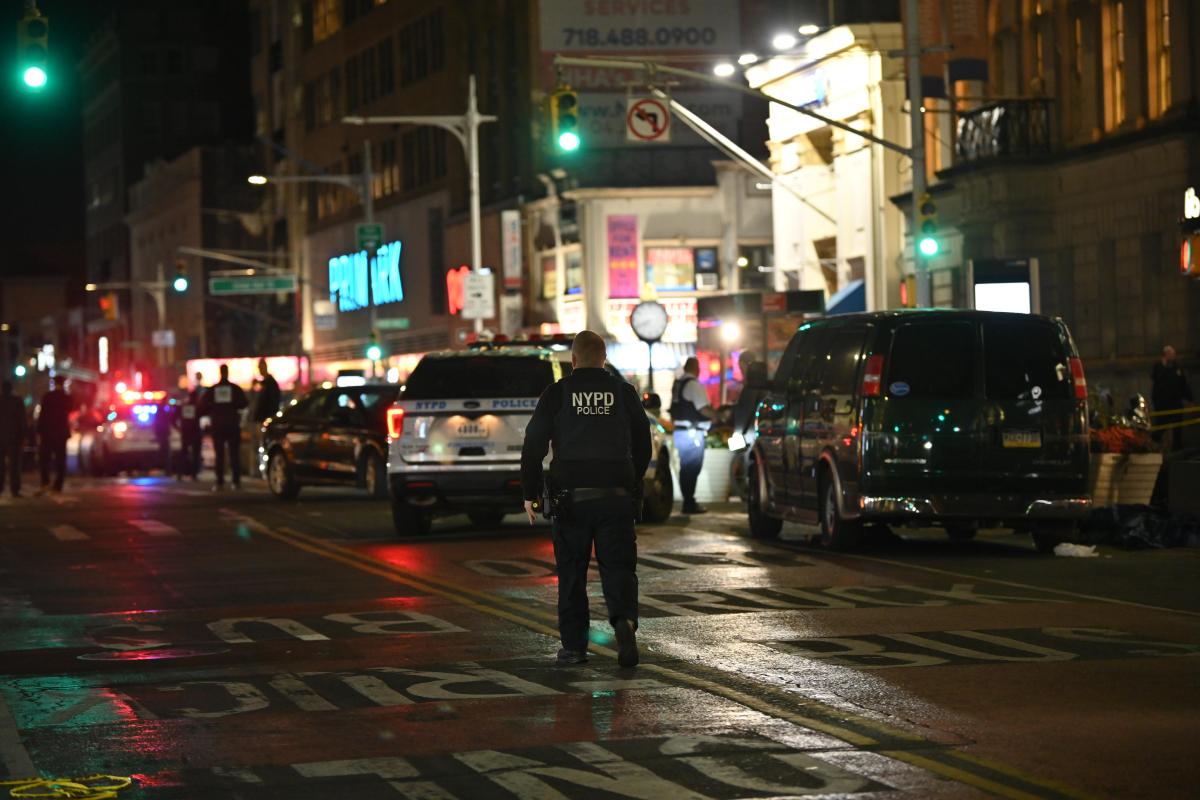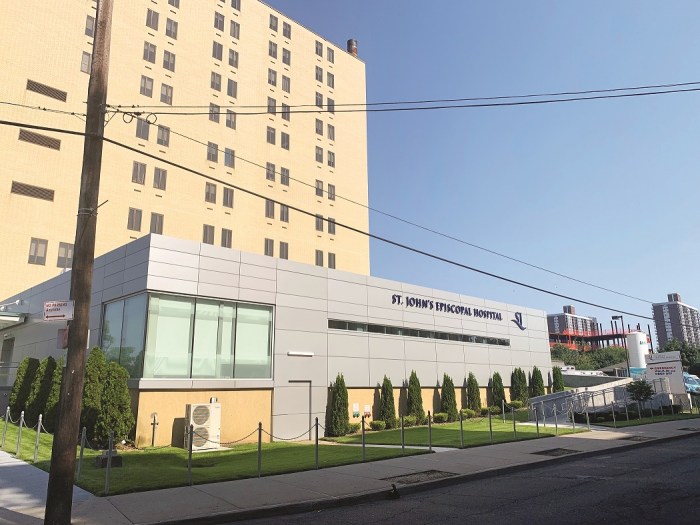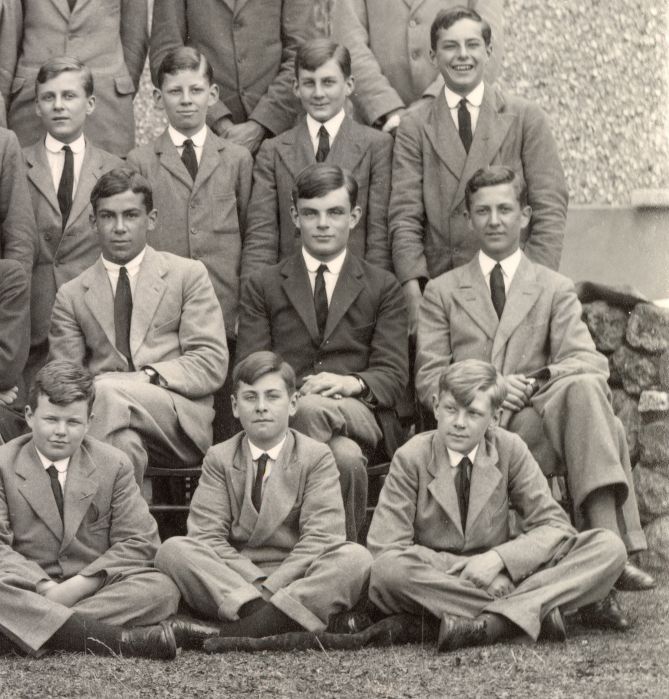-
 They can be redeemed at MetroCard vending machines to avoid paying the $1 green fee.
They can be redeemed at MetroCard vending machines to avoid paying the $1 green fee.
“I find used MetroCards on the ground. I’ve been fortunate enough I haven’t had to purchase any.” – Mario Scott, 34, Woodhaven, computer consultant.
“I don’t throw out a Metrocard. I keep it for a month so I can save a dollar.” – Lanndin Hutaj, 25, Pelham Parkway, fire safety director.
” data-id=”17335763″ data-link=”https://amnewyork.wpengine.com/wp-content/uploads/2019/10/11496_image.jpg” class=”wp-image-1.7335763″/>
Photo Credit: Charles Eckert -
 The 42nd Street shuttle at Times Square has a noticeable gap. And while there are gap fillers on some tracks, they are beneath the platform.
The 42nd Street shuttle at Times Square has a noticeable gap. And while there are gap fillers on some tracks, they are beneath the platform.“On the shuttle, there’s a big gap going outside the train to Times Square. You can fall in the tracks. I always tell passengers to be careful.” – Carol Brennan, 58, Far Rockaway, retired.
” data-id=”17335778″ data-link=”https://amnewyork.wpengine.com/wp-content/uploads/2019/10/11497_image.jpg” class=”wp-image-1.7335778″/>
Photo Credit: Caroline Linton -
 Getting a seat on the train can be a New York rarity like a rent-controlled apartment or a late-night cab ride to the outerboroughs. But there are New Yorkers who know how to optimize their chances by staking out a spot on the platform.
Getting a seat on the train can be a New York rarity like a rent-controlled apartment or a late-night cab ride to the outerboroughs. But there are New Yorkers who know how to optimize their chances by staking out a spot on the platform.
“On lines that use the same model train, figure out a spot where the doors open when the train stops. It gives you a leg up for getting a seat or at least a space on the car.” – Gene Russianoff, attorney for the Straphangers Campaign
“Every morning I stand in the same place and get right near the door. It helps a lot when I’m looking for a seat.” – Sarah Polito, 27, Upper West Side
” data-id=”17335789″ data-link=”https://amnewyork.wpengine.com/wp-content/uploads/2019/10/11498_image.jpg” class=”wp-image-1.7335789″/>
Photo Credit: Rachel Senatore -
 As if navigating the subway system wasn’t tough enough, fellow riders — panhandlers, “Showtime” dancers, nail clippers and subway diners — can test the nerves of the most seasoned and hardboiled New Yorker. Riders gave us tips about getting through the commute.
As if navigating the subway system wasn’t tough enough, fellow riders — panhandlers, “Showtime” dancers, nail clippers and subway diners — can test the nerves of the most seasoned and hardboiled New Yorker. Riders gave us tips about getting through the commute.
“I meditate on the train because its a 45-minute commute. It’s a good time to relax and not let the rush get to you.” -Jimmy Hickey, 40, Bed-Stuy, creative director
“Tunnel vision. Don’t make eye contact with anybody. They might go crazy on you.” -Leslie Ortiz, 19, Soundview, skate school coordinator
“Having a smartphone so that I can use it to catch up on my own work makes the subway ride more enjoyable.” -Sharon Jackson, 47, Battery Park, screenwriter
“Always carry baby wipes. Clean your hands, a pole, a seat, or the ketchup you accidentally sat in off your pants.” -Sarah Kaufman, staff analyst at NYU Rudin Center for Transportation
” data-id=”17336147″ data-link=”https://amnewyork.wpengine.com/wp-content/uploads/2019/10/11499_image.jpg” class=”wp-image-1.7336147″/>
Photo Credit: iStock -
 While using the subway can be a challenge for any person, it can be an especially difficult and daunting endeavour for passengers who use wheelchairs or have mobility issues.
While using the subway can be a challenge for any person, it can be an especially difficult and daunting endeavour for passengers who use wheelchairs or have mobility issues.
We spoke with Michael Harris, a freelance journalist who founded the Disabled Riders Coalition, for his suggestions on navigating a 110-year-old system where 25% of stations are accessible.
Harris said “EasyPay” lets riders manually or automatically reload a MetroCard using an account, instead of a vending machine at an inaccessible station. Also, he suggested logging ontothe mta.info to map an accessible route in advance using Trip Planner and to check if elevators areworking.. Mobility-impaired riders can get a card to independently open a service gate at many accessible stations that feature an “AutoGate” box.
“Two important things people with mobility impairments, particularly those who use wheelchairs, can do to make their commutes a little easier are to plan ahead and practice,” Harris wrote.
He also suggested that riders observe their surroundings to know which side a door opens on a train and which inaccessible stations can be useful to riders who use wheelchairs. These include stations where a rider can transfer to another line or switch between a northbound and southbound train on a single platform.
He also said to keep a look out for signs that say “boarding area” and have a wheelchair logo.
“This area is generally higher than the rest of the platform, helping to reduce the vertical gap between the platform and the train. It is also where the conductor sits,” Harris said.
Harris recommended that riders using wheelchairs get the Map for Persons with Disabilities, which emphasizes accessible stations and parallel bus routes; and the Accessible Station Card, a fold-out business card that lists accessible stations by line. Both documents are available at the Customer Service Center at 3 Stone St. and by calling NYC Transit ADA Compliance at 646-252-3053.
” data-id=”17336292″ data-link=”https://amnewyork.wpengine.com/wp-content/uploads/2014/03/image-71.jpg” class=”wp-image-1.7336292″/>
Photo Credit: iStock
Achieving a successful and smooth ride in the city’s massive, complex and bustling 24-hour subway system can elude everyday regulars and newbies, alike. But there are tips and tricks everyone develops in their routine train travels, whether it’s how to optimize your chance of getting a seat, chop precious minutes off of a commute, or just make it through the system.
“In a busy station like this,” Jefferson Hughes, 23, of Flatbush, said at Penn Station, “people are hustling and bustling. If you don’t know where you’re going, they’ll knock you over.”
Brian Gallagher, a 24-year-old California transplant living in Harlem , admitted to taking the wrong train on occasion.
“Hopefully, if I stay longer, I will learn more tricks,” Gallagher said. “It definitely takes some getting used to.”
We spoke with nearly three-dozen train riders, including a couple of transit experts, who shared their subway wisdom to help both beginner and seasoned straphangers.




































